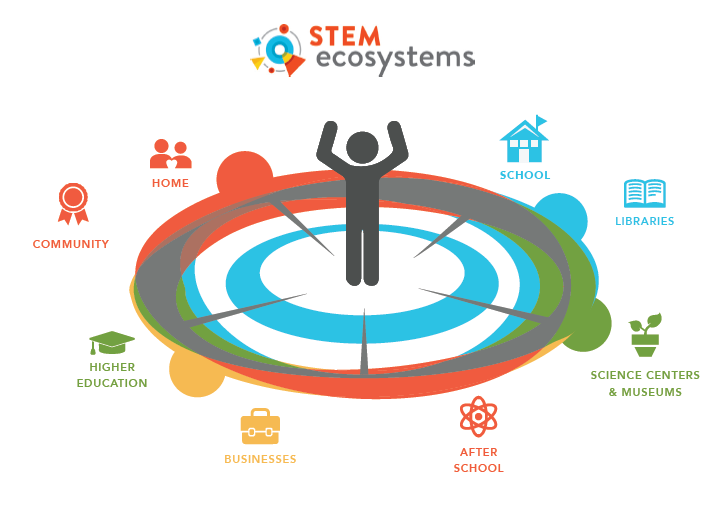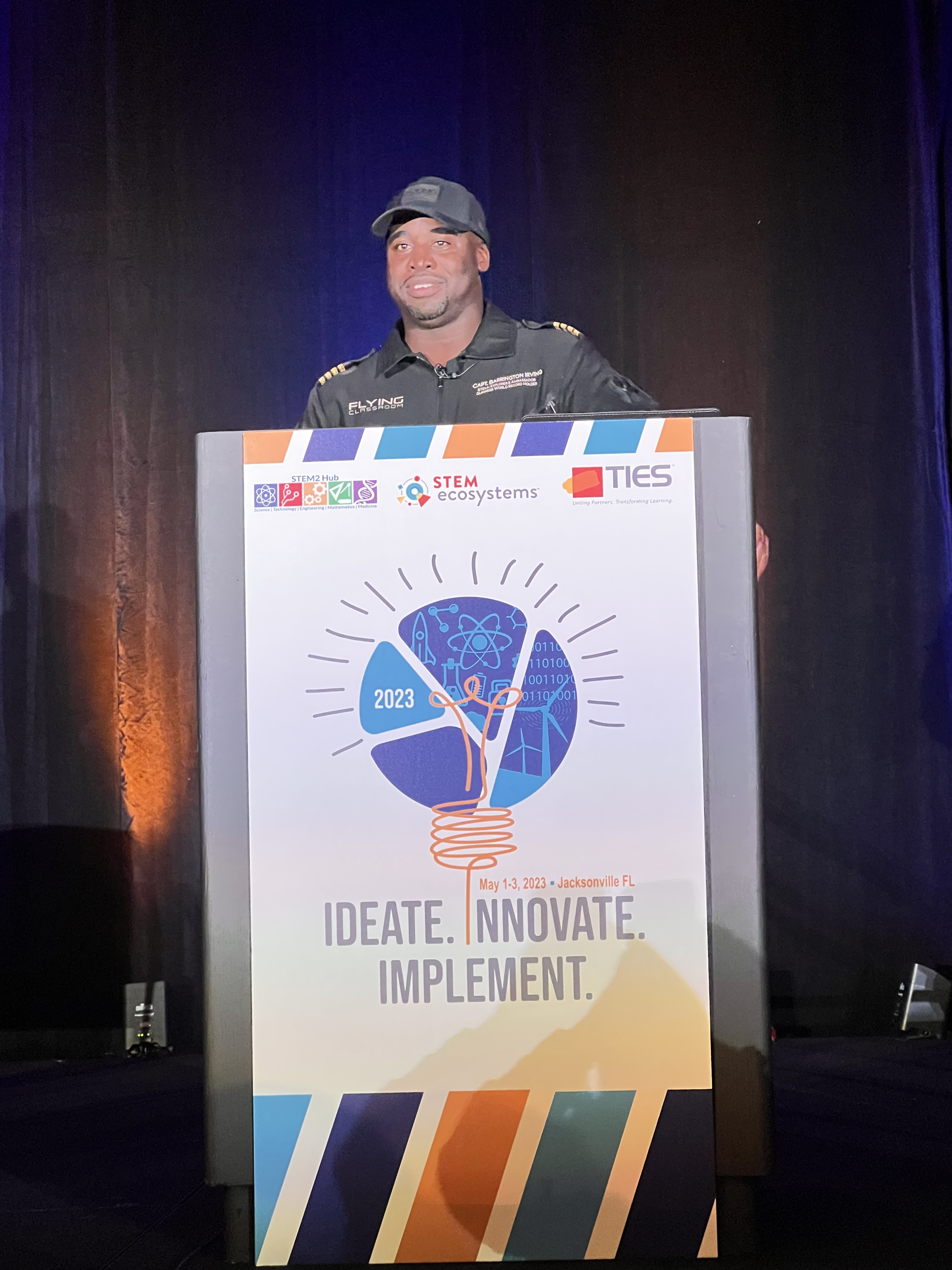The term “intermediary” will likely be a familiar one if you work in education or the public sector; however, it might be less recognizable for others. What is an intermediary?
An intermediary is an individual, organization or group that links resources, money, expertise and more with the needs of an organization, population, community or region. They act as the connectors; the brokers to make important introductions, bridge gaps in services or work and generally have an understanding of the issue you are attempting to solve and/or the community.
Intermediaries are the people in the know and the people to know.
In the STEM learning field, there are multiple organizations doing excellent work to provide the learning opportunities and skills necessary for people to best navigate the ever-changing world around them, prepare them for future careers or to invent solutions they see within their communities. These organizations include schools, institutions of higher education, businesses, government, and community-based organizations like churches or afterschool programs. While each stakeholder group is working hard to impact the people they serve, they don’t often speak to one another. This means that children participating in science or math courses in their classrooms might not have experiences to extend their learning after school or in the summer if their school and local out-of-school programs aren’t communicating. The learner misses out on a whole realm of new experiences to explore their passions and grow their skills.
In the beginning of May, STEM Next had several representatives, including STEM Next Opportunity Fellows, participate in the annual STEM Learning Ecosystems Community of Practice (SLECoP) Convening. The event gathered stakeholders from around the world – schools, out-of-school programs, colleges, educational vendors, industry, funders and more – to learn about STEM, partnerships, resources and best practices to engage communities and better connect learning opportunities.
STEM Learning Ecosystems are, by our initial definition, intermediaries, and this convening gathered leaders to discuss how they could best broker relationships to explore growing fields like AI and cybersecurity, as well most effectively reach historically underserved children, families and adults.
STEM Learning Ecosystems convene the expertise within a specific region to connect opportunities, keeping the learner at the center. Ecosystems connect museums and parks with schools to have more aligned learning on field trips. They help bring businesses and community colleges together to offer credentials and industry expertise. Ecosystems facilitate professional development for classroom and out-of-school educators together to create seamless, exciting learning experiences for students inside and outside of the classroom. They are intermediaries.
After participating in a few days of significant conversations with experts and workshops, STEM Next has reflected on key-takeaways for the out-of-school STEM field and partners looking to amplify the power of afterschool and summer STEM.
Find Your Community
It is impossible to do the work alone – in any field. Our young people are living in a world where about 50% of work happening globally can be replaced by automation. This means new skills are needed to adjust to the ways that technology is changing how we work.
There are experts within your community who can help your program or region understand the types of skills kids need to learn to be prepared for future careers. For example, every state has a Statewide Afterschool Network, many states have STEM Learning Ecosystems, Every Hour Counts communities or Strive Networks. The National Summer Learning Association also runs Professional Learning Communities, these can be excellent starting places if you are looking to connect.
Young people spend 80% of their time learning outside of the classroom and out-of-school environments create an environment where students can experiment without the stress of passing a test. By identifying and partnering with the right people and organizations, afterschool and summer activities can be a playground for kids to explore new worlds of possibilities.
Share Your Stories
Once you know who is helping to lead change in your area, it’s time to share your expertise and stories. There is important data being gathered in all of your work – from student feedback about their career interests and general knowledge to testimonials about their transformed interests and new trajectories. This information is critical to share with government officials so they can prioritize and allocate resources to programs that are responsible for the future leaders and workforce of the nation. It is important for philanthropic and corporate funders to know what you are creating so they can help continue and expand access to such experiences for more learners.
Each state has an afterschool state network with resources and advocacy capabilities to uplift the importance of out-of-school learning. There are 107 STEM Learning Ecosystems around the world who can appreciate and elevate your work.
Pay it Forward
As you contribute to the formation of learning pathways, you will learn more about who else is committed to providing a better way forward for youth. Building relationships with intermediaries will expand your local networks and bolster the ability for your community to build critical STEM skills within young people. And don’t forget to include your compatriots and competitors – more is more when it comes to building an effective and vibrant STEM network.
As you think and identify intermediaries and partners in your area, we invite you to share more with us. Tweet @STEMNext a story about the power of collaboration to transform STEM learning for young people in your community. Tell us what’s next in STEM!
Connect with Us
As we think about STEM Next’s policy agenda moving forward, we know that intermediaries are critical to support high-quality OST STEM opportunities for more students who do not have access. If you are interested in working with us on what this might mean or look like, reach out to Melissa Moritz (mmoritz@stemnext.org).




